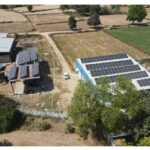Chandrayaan-3’s victorious arrival of its lander and rover on the South Pole of the Moon represents the pinnacle of India’s technological and space supremacy and a truly historic achievement. This remarkable accomplishment has not only demonstrated India’s scientific prowess but has also rekindled the Indian Space Research Organization’s (ISRO) sense of aspiration. While the country celebrates this accomplishment, ISRO is already starting its next mission, which will use the Aditya L1 spacecraft to explore the Sun’s mysteries.
A New Frontier: The Aditya L1 Mission
As ISRO turns its attention from the Moon to the Sun, its drive of exploration and discovery continues. India’s first ever space-based solar observatory spacecraft, Aditya L1, is poised to shed light on the mysterious behaviours of the Sun and their ripple effects on space weather. This audacious project promises to offer previously unheard-of insights into the character and behaviour of our nearest star.
Building on Triumph: Chandrayaan-3’s Success
Not only has the Chandrayaan-3 mission’s success bolstered ISRO scientists’ spirits, but it has also given them renewed confidence. This outstanding accomplishment has given ISRO the confidence to aim higher and explore unexplored territory, like studying the dynamics of the Sun.
Countdown to Launch: A Date With Destiny
On September 2, 2023, the Aditya L1 mission will launch on its historic voyage. Mark that day on your calendars. The launch of the Aditya L1 spacecraft is another historic occasion that ISRO scientists and engineers are preparing for with the success of Chandrayaan-3 still fresh in their thoughts.
Budget Allocations: Investing in Innovation
The Indian government has pledged to advance scientific research and exploration by allocating the Aditya L1 mission a budget of about Rs. 368 crore. Although ISRO has not yet revealed official numbers, this investment highlights the importance of the mission’s goals.
Unraveling Solar Mysteries: The Aditya L1 Mission Objectives
The Aditya L1 spacecraft is positioned in a halo orbit around the Lagrange point 1 (L1) in the Sun-Earth system, which is around 1.5 million kilometres away from Earth and set to transform our understanding of the Sun. Due to the Sun’s uninterrupted observation made possible by this clever orbit, astronomers may study the Sun’s processes without interference from eclipses.
A Suite of Scientific Instruments: Payloads and Exploration
The Aditya L1 spacecraft carries seven painstakingly created payloads, each of which focuses on a different aspect of understanding the Sun’s various layers. The spacecraft intends to unravel the mysteries of events including coronal mass ejections, solar flare activities, and more by combining electromagnetic and particle detectors with magnetic field sensors.
Paving the Way for Discovery: Advancing Science and Knowledge
The Aditya L1 mission aims to answer persistent questions about the Sun’s behaviour, the mechanics of space weather, and the transmission of particles and fields. The spacecraft is positioned to offer crucial insights into the underlying makeup of our star and its impact on the cosmos thanks to its cutting-edge technology and advantageous orbit.
In essence, the Chandrayaan-3 mission’s success represents the pinnacle of India’s technological and space achievements. As the country basks in this glory, ISRO’s exploration programme moves forward with the daring Aditya L1 mission, an attempt to comprehend the intricate workings of the Sun. This mission, whose launch is imminent, demonstrates India’s dedication to furthering scientific understanding and solving the mysteries of the cosmos.







